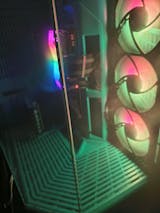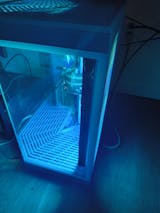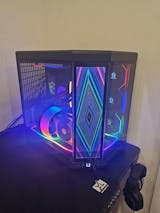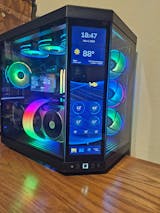How long do gaming laptops last? Before we pick a number, it helps to define what we mean by “last”:
-
Functional lifetime — the period over which the laptop hardware still works (powers on, boots, runs basic tasks).
-
Gaming relevance — how long the laptop can run modern games at acceptable performance (frame rates, resolution, quality settings).
-
Component degradation — when parts begin to fail (battery, fans, thermal paste, etc.).
A gaming laptop might “last” 6 years in a functional sense, but by year 4 its GPU might struggle to run new AAA games smoothly.
Typical Lifespans: What the Experts Say
Here are some consensus figures and ranges on the average lifespan of gaming laptops from tech sources:
| Source | Estimate / Range | Notes |
|---|---|---|
| PCWorld | 4 to 6 years under typical use; up to 10+ years if very well maintained PCWorld | If not maintained, it could fail in ~3 years PCWorld |
| WePC | Around 4 to 7 years WePC | Let's build your dream gaming PC | Depends heavily on build quality and cooling WePC | Let's build your dream gaming PC |
| Business Insider (for general laptops) | 4 to 5 years (gaming ones tend to become obsolete more quickly) Business Insider | The battery is usually the first major weak point Business Insider |
| GamingLaptop.deals | Mid-range: ~3 years; high-end: closer to 5 years Gaming Laptop Deals | Based on gaming viability rather than just functionality Gaming Laptop Deals |
| TechTheLead | Max settings: 1–2 years; medium settings: 3–4 years; basic play: ~5 years TechTheLead | After that, you’ll have to lower graphics settings to keep playing TechTheLead |
So overall, a reasonable expectation is:
A well-built gaming laptop, used regularly and maintained decently, can last 4 to 6 years before it becomes seriously limited for new games.
With great care, parts replacement, and tolerance for lower settings, it might continue to be usable for 7 to 10 years in some capacity.
What Limits a Gaming Laptop’s Life?
Several factors influence how long a gaming laptop remains usable. Below are the main limiting factors:
1. Heat & Cooling Degradation
Gaming pushes CPUs and GPUs hard, generating lots of heat. Over time:
-
Thermal paste dries out or degrades.
-
Dust accumulates in fans and heatsinks, reducing airflow.
-
Components (especially capacitors) degrade faster with prolonged high temperature.
Because gaming laptops are more compact, they have less room for cooling than desktops, accelerating thermal stress.
2. Battery Wear
Laptop batteries (usually lithium-ion) naturally degrade with charge/discharge cycles. After 2–3 years, many batteries lose a significant portion of their capacity. Eventually, a laptop may only work reliably when plugged in.
3. Non-upgradable CPU/GPU
Unlike desktops, most gaming laptops have soldered or non-upgradeable processors and graphics chips. Once they fall behind in performance relative to game demands, you can’t just replace them.
4. Wear & Tear on Mechanical Parts
Things like fans, bearings, hinges, keyboard keys, trackpads, and the chassis itself can wear out. In extreme cases, overheating may warp internal parts, loosen connections, or damage solder joints.
5. Game Demands & Software Evolution
Even if the hardware still works, future games may demand much more. You may have to lower settings or resolution to maintain acceptable performance. This is often what “kills” a gaming laptop’s usefulness before outright hardware failure.
How to Extend the Lifespan
If you want your gaming laptop to last as long as possible, here are recommended practices:
-
Regular cleaning. Open it periodically to remove dust from fans, heat sinks, vents.
-
Reapply thermal paste. After a few years, restoring good thermal contact helps reduce heat stress.
-
Use cooling pads / elevate the laptop. Improves airflow around the base.
-
Avoid constant maximum load. Don’t always push CPU/GPU to 100% for hours — occasional breaks help.
-
Manage power profiles. Use optimized modes for lighter tasks, avoid unnecessary overclocking.
-
Replace the battery when it degrades. Even if old, a healthy battery reduces strain.
-
Choose quality components up front. Good cooling, sturdy build, and components from reputable brands help immensely.
-
Control ambient temperature and avoid obstructed airflow. Use on hard surfaces, not soft beds/blankets, and keep it in ventilated environments.
What to Expect Year-by-Year (Rough Scenario)
Here’s a hypothetical trajectory for a mid–high end gaming laptop that’s decently maintained:
-
Year 1–2: Near peak performance. Minor drops due to software patches or driver changes.
-
Year 3–4: Newer games push you to medium settings; battery capacity may drop noticeably.
-
Year 5: You’ll likely need to play many new games at lower settings; components may begin to fail (fans, hinges, etc.).
-
Year 6–7+: Only older or less demanding games are playable; major component failures or obsolescence likely.
Bottom Line
-
Functional lifetime: 4 to 6 years is a good target for regular use.
-
Gaming relevance: You’ll probably have to compromise on graphics settings by year 3–4.
-
With excellent care and luck, some gaming laptops can persist beyond 7 years, though with diminishing performance.













